KTM 890 SMT Review
We loved the old KTM 990 SMT. Trev owned one as his personal runabout. It was actually Trev’s bike that I first threw my leg over in the Victorian High Country, blasting up and down Hotham while giggling like a teenager. It might not have looked like it, but it was a hoot. Bonkers fun.
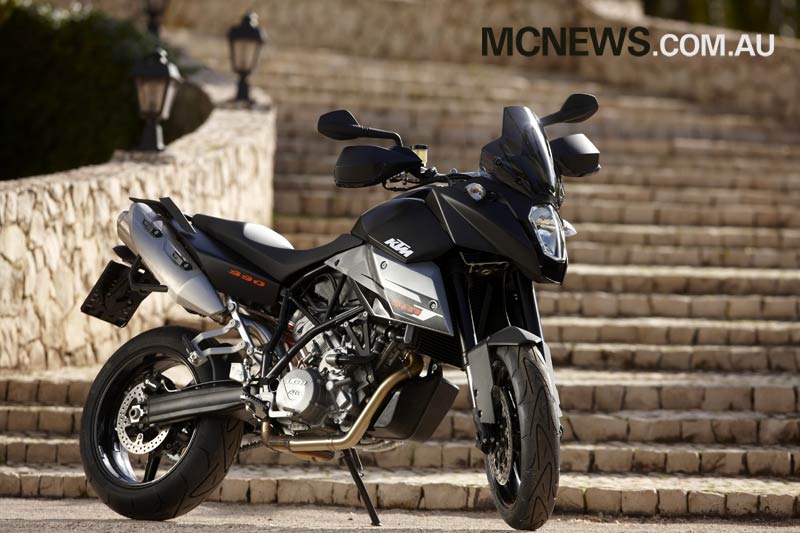
Sure, it had a face that only a mother could love and the fuelling was a bit rough on the first injected 990 donk, but those who rode them knew how ace they were despite some rough edges. And then just as quickly as they appeared, they were no more. Sadface Wayne 🙁
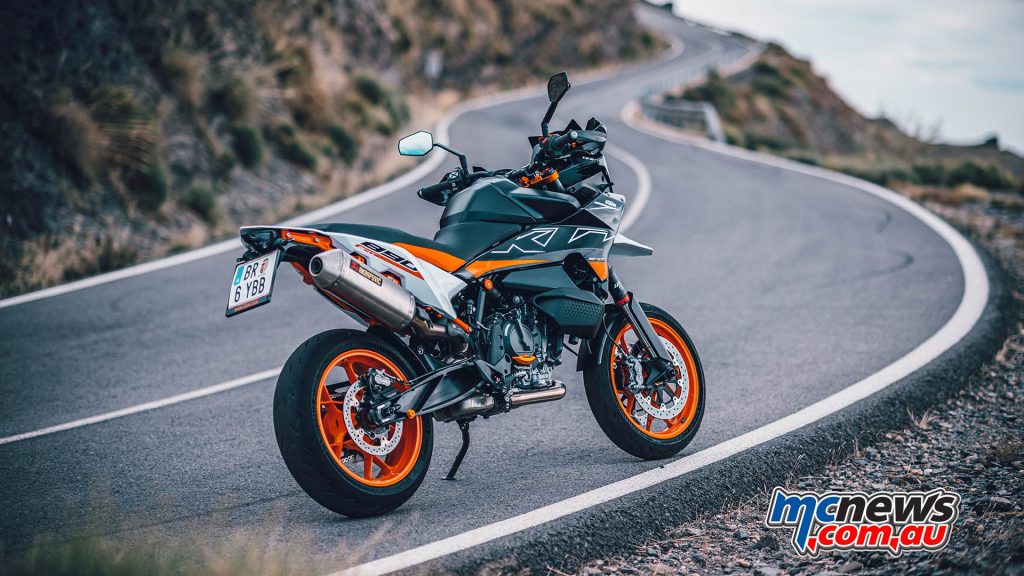
Fear not my riding comrades because now the SMT is back in updated 890 guise. We know the 890 LC8c driveline well enough, having spent time on the 890 AR launch as well as a somewhat cut-short run at the Australian High Country Rally that didn’t quite go to script. So when we heard The SMT was being reintroduced – we had questions. Specifically:
- How does it compare to the old one?
- Is it as good on road as the AR is off road?
- And; is it really a Sport Tourer?
What better way to find answers to all three questions than launch into a tour. Not just any tour but an 11-day, 3,500 kilometre tour of Southern Europe. Starting from KTM head office in Mattighofen Austria, I rode south to Italy, via a corner of Germany actually, then took in some of the greatest roads on the planet through the Alps and Dolomites to Switzerland.
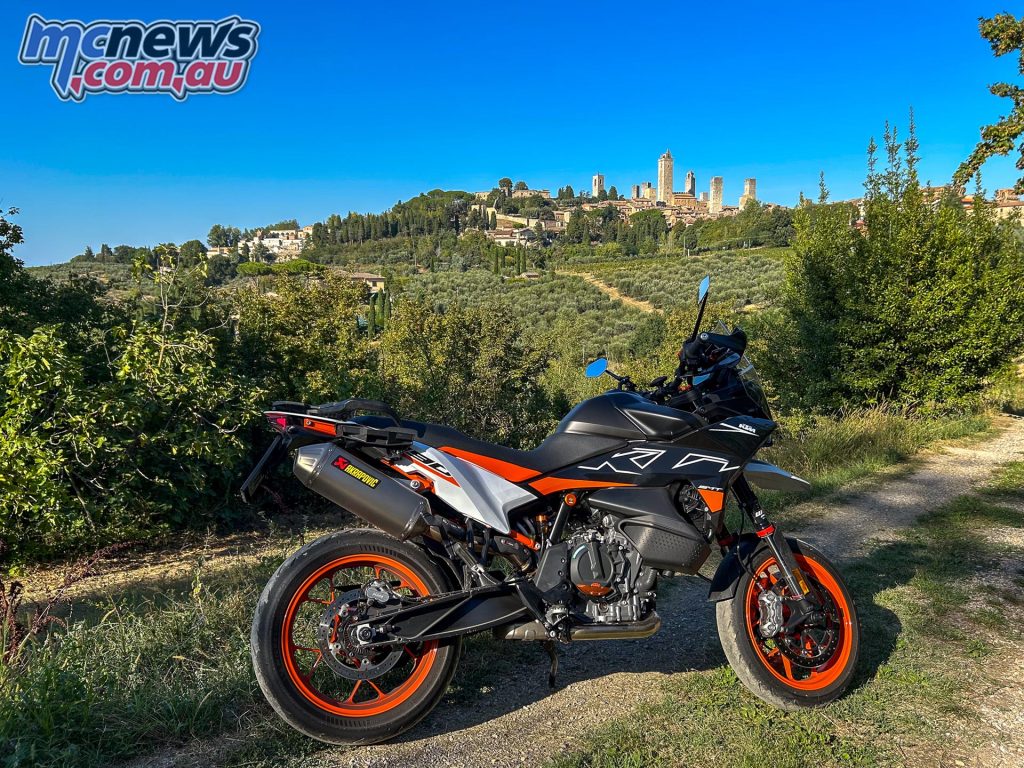
Then turning South-East and back across Italy, past Bologna for a stop in at Misano for the MotoGP. Ducking into San Marino for a night. Carved through some Tuscan back-roads then turned and headed North back to Austria via the mountains again.
Sweet. Baby. Jesus. What a lap. We’ll actually dive into the ‘lap’ in more detail in another article. But first let’s talk about what the SMT actually is.
Obviously it shares a bunch of elements with the terrific 890 Adventure R. In fact, the engine, frame, drive-line, brakes and swing-arm, are all shared between the two. This is over-simplifying it, but think of the SMT as an Adventure R with 17-inch wheels and accordingly revised suspension and geometry, bodywork, plastics and ergos.
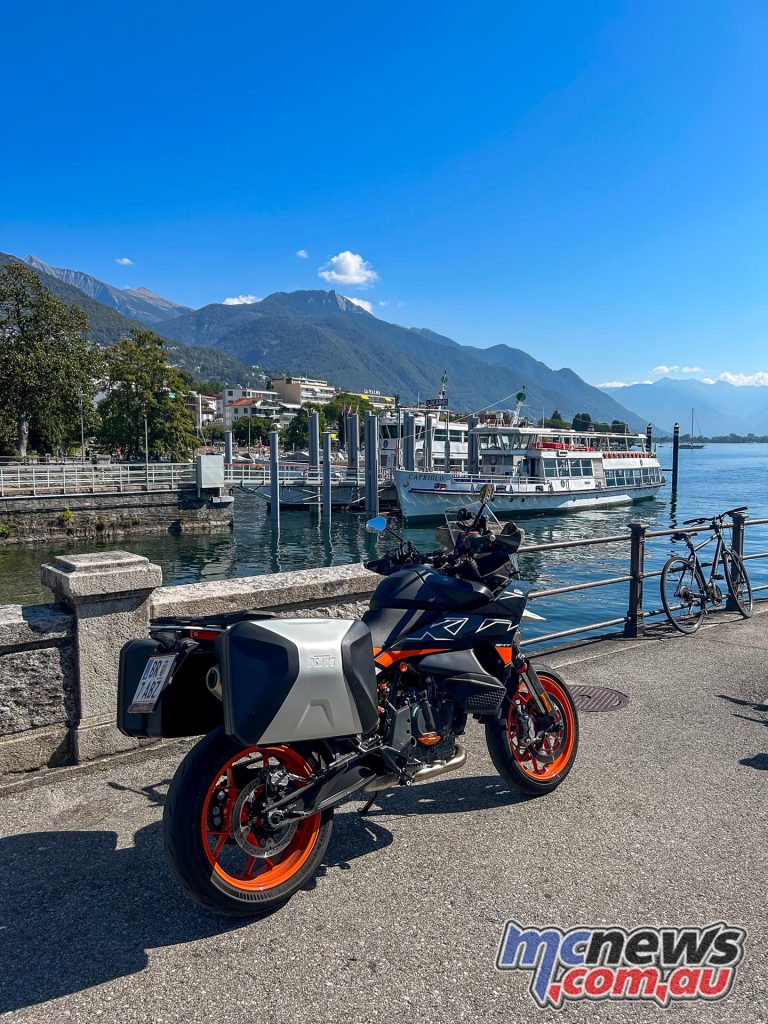
Notably including a slightly smaller tank, positioned slightly higher for better on road manners. All of those changes turn it from the go anywhere adventure machine into a very capable and comfortable real world sports-tourer.
Now the word ‘tourer’ in Sports-Tourer might be a bit misleading in this case because that tends to put pre-defined boundaries on its capabilities – even as I’m writing this I’m not comfortable with calling it a Sport-Tourer as it sells it a bit short in a lot of ways, I’d think of it more as a sports all-rounder. While it’s focus is probably not as much at the touring end of the spectrum as many other bikes within the category, in a lot of ways I think it’s better for it.
Hear me out. Even though it might have slightly less weather protection and not come standard with heated grips for instance, I’m convinced that it’s arguably a better proposition than most when it comes to everything, other than when loaded up to the gills with a pillion. And even then the difference would be marginal.
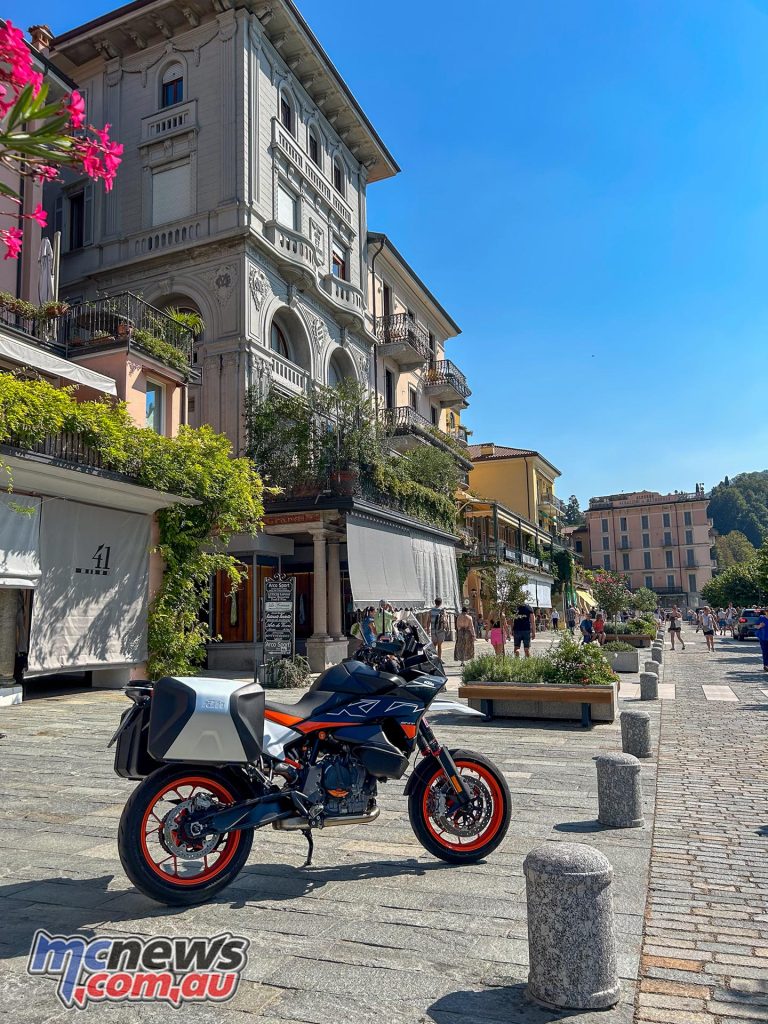
Let’s get into specifics.
The driveline is well known and very nicely refined by now. In terms of important numbers, it makes the same 104 hp as the Adventure R, with the same tune. While being a handful down on peak power compared to the tune on the Duke, this bike is more flexible and usable in most conditions. Also helping is the fact that it’s been on a bit of a diet, tipping the scales at 194 kg dry – six kilos less than the Adventure R.
That tune really is super flexible. I have some GoPro footage of me talking about just how good the bottom end is and how the bike is pulling nicely out of a tight corner in third… Only to realise that I was in fourth. That shows two things. Firstly – just how smooth the bottom end is; and secondly – that I was obviously paying too much attention to commentating and maybe the scenery and not enough to pedalling the box…
And while 104 ponies might not seem massive and is marginally down on the original SMT 990, it bangs out a solid 100 Nm of Torque, which is up on the old V-Twin, so performance-wise it’s very similar. And there was nothing on the road I came across that dropped us – even with the cases on. Certainly not below say… a buck sixty or seventy? Which is where it matters on the road.
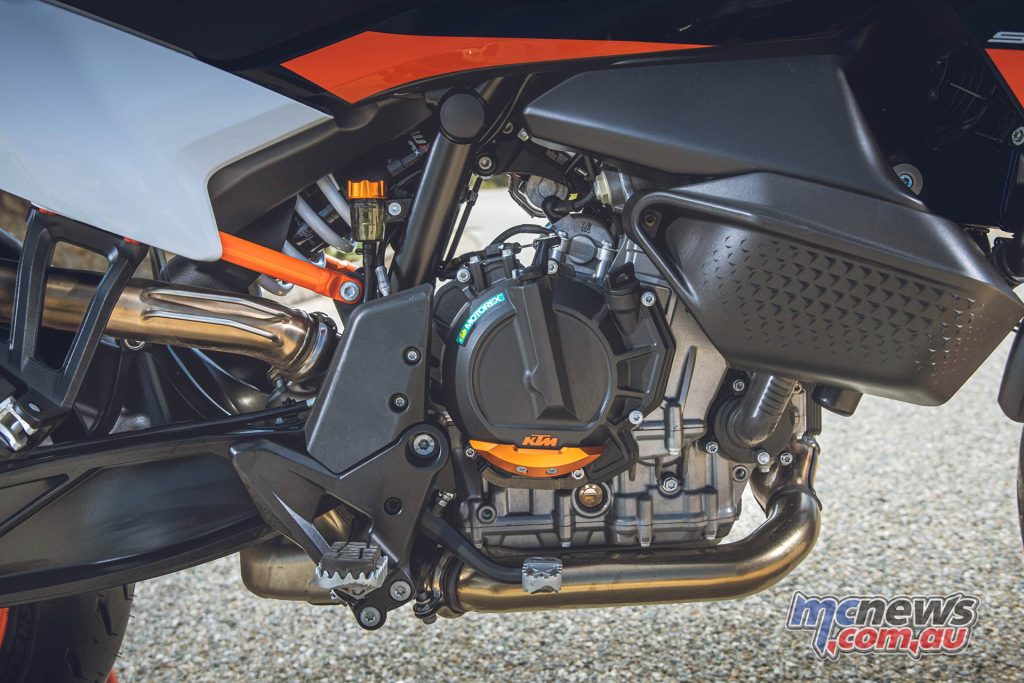
Nice exhaust note with the Akrapovic slip on too, without it being anti-social. I had the side cases on all the time so rarely got to see the Akro other than when fitting or removing the cases at the start or end of each day’s riding, but I did enjoy the sound.
The gearbox is nicely spaced and we were happily sitting at Euro highway speeds well north of our Aussie limits at times. The quick-shifter I’d mark as good, but maybe not great. It shifts fine don’t get me wrong – street mode in particular felt nice and smooth.
Track mode steps up the game and bangs them in with much more authority. And while most of the time I preferred the smoother shift in street mode, I wanted to be in track mode to give me access to the adjustable TC and some other goodies. So I ended up relishing the more aggressive shifts when I was in the mood, and just using a little clutch when I was cruising which worked just fine.
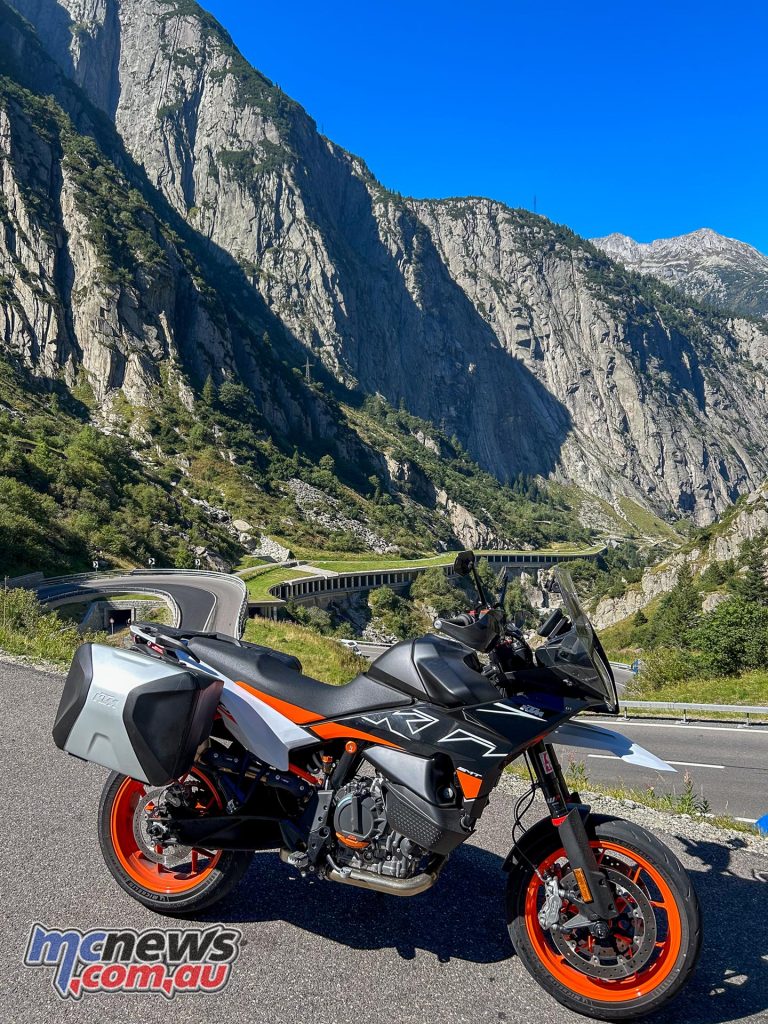
Also worth mentioning for full transparency is that occasionally I’d half arse the up-shift and only just tap the lever. And it would find a false neutral and would then fairly abruptly drop back into the gear I was in. I found it did this more before I nipped the chain tension up a little about two-thirds of the trip in.
So bearing in mind that it would have been a new chain when I picked it up, I’d say it was mostly caused by that new chain stretching as they do when new. It certainly wouldn’t be the first quick-shifter to be a little fussy around chain tension.
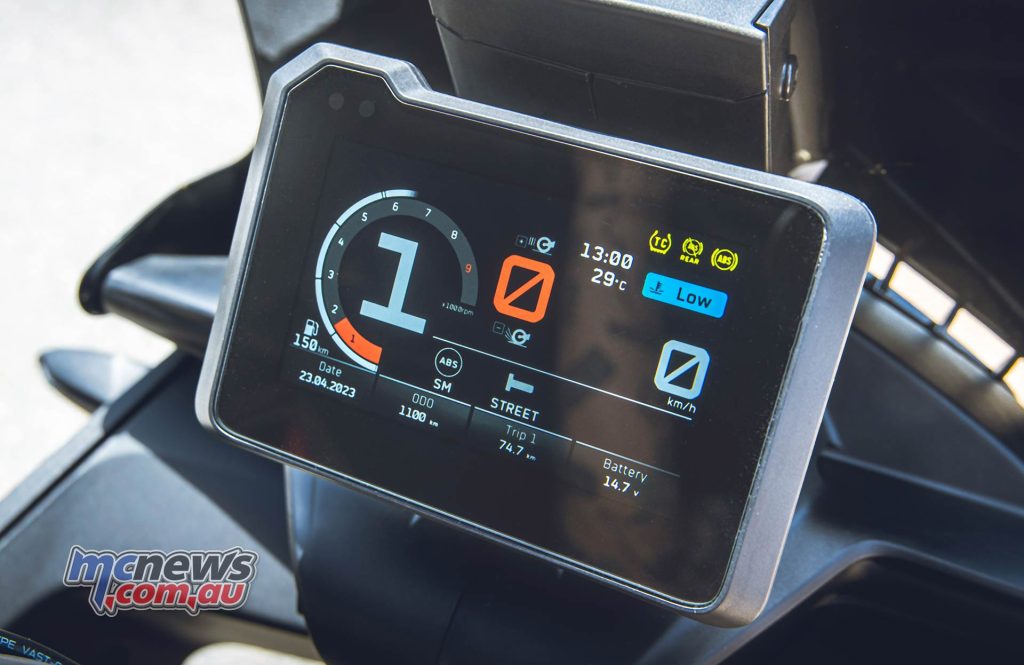
There’s a lovely five-inch TFT dash and the usual bunch of electronic options. Rain, Street, Sport and the optional Track mode allowing you to pick and choose settings for throttle, traction, ABS (including supermotard braking).
Track mode also has a different display focusing more on revs and gear than speed while showing the adjustable TC setting. My preference was for Track mode, with Street throttle. And while I did have the bike on Supermotard braking – I thought better of trying to find its limits while on tour on the other side of the world, tempting though it was…
Ride position is surprisingly comfortable and the nice wide bars make for an effortless mile eater. It felt very familiar when I threw the leg over for the first time. Seat height sits at 860 mm but doesn’t feel as high as that might suggest. The single piece seat shape is super comfy while still having enough firmness to transfer plenty of feedback from the bike mid-corner.
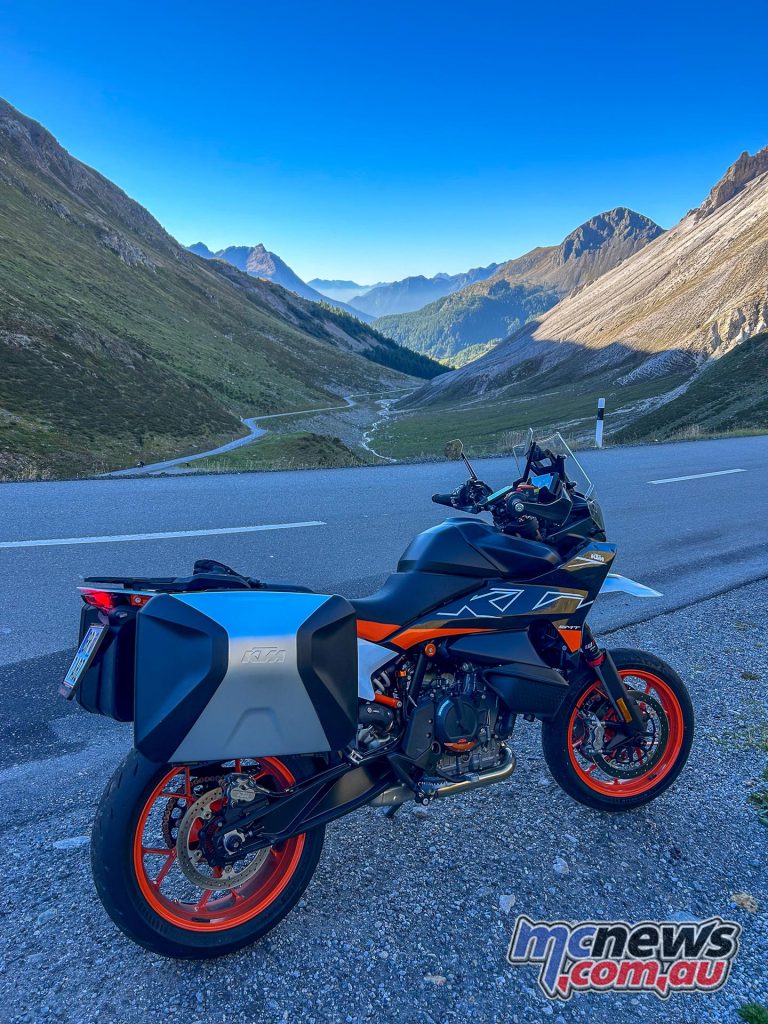
Surprisingly, the standing position was pretty good too. The bodywork between the knees made for a natural and comfortable standing position. I found myself standing occasionally, either for more visibility over crests or to stretch the legs after a few hours of seat time.
That front screen isn’t enormous but offers surprisingly good wind protection with very little buffeting. I’m not overly sensitive to buffeting unless it’s crazy bad, but even wearing my favourite peaked Airoh Commander lid I had no issues at all.
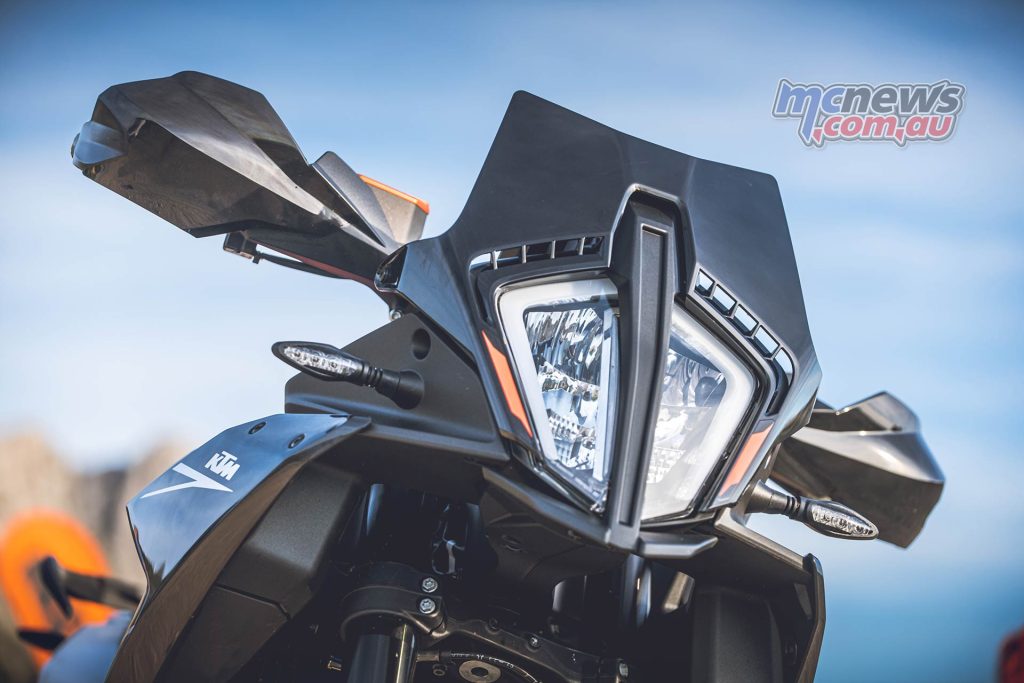
I did get caught in a couple of heavy showers on the final day and yes you will get wet if you’re not wearing waterproof gear. I was hoping to complete my run of dry riding for the entire 11 days and stick with kevlar jeans in the warm weather, but was proven soundly wrong.
Handling wise, this is the area I think the bike’s personality starts to shine through and it steps further away from the Adventure R. I think they’ve absolutely nailed the SMT here. It’s literally a bike you can do anything with. Seems you can ride it any style you want and it still feels great. Inside leg forward motard style, dangling knees in the breeze sportsbike style, or just sit and lean into the corners. It’s supremely flexible.
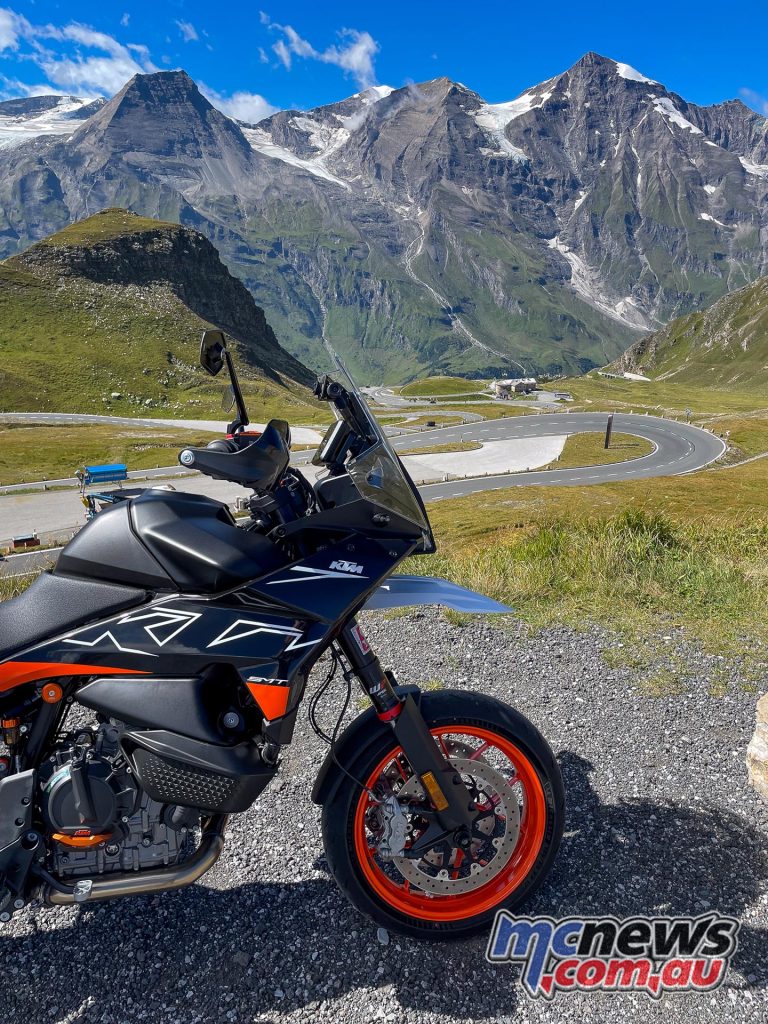
The 180 mm suspension travel (down from 240 in the AR) is a generous amount for real roads – nice and agile, without being intimidating. It makes for a fine urban tool for stop-start slow speed riding and filtering and yet will turn into a hooligan machine at a whim if that’s your mood.
All while being plenty comfortable even for back-to-back big days in the saddle as I found out. Ignoring my one ‘day off at the MotoGP’ where I only rode a couple of hours, I averaged nearly six-hours in the saddle each day. So there’s no doubt it’ll tour.
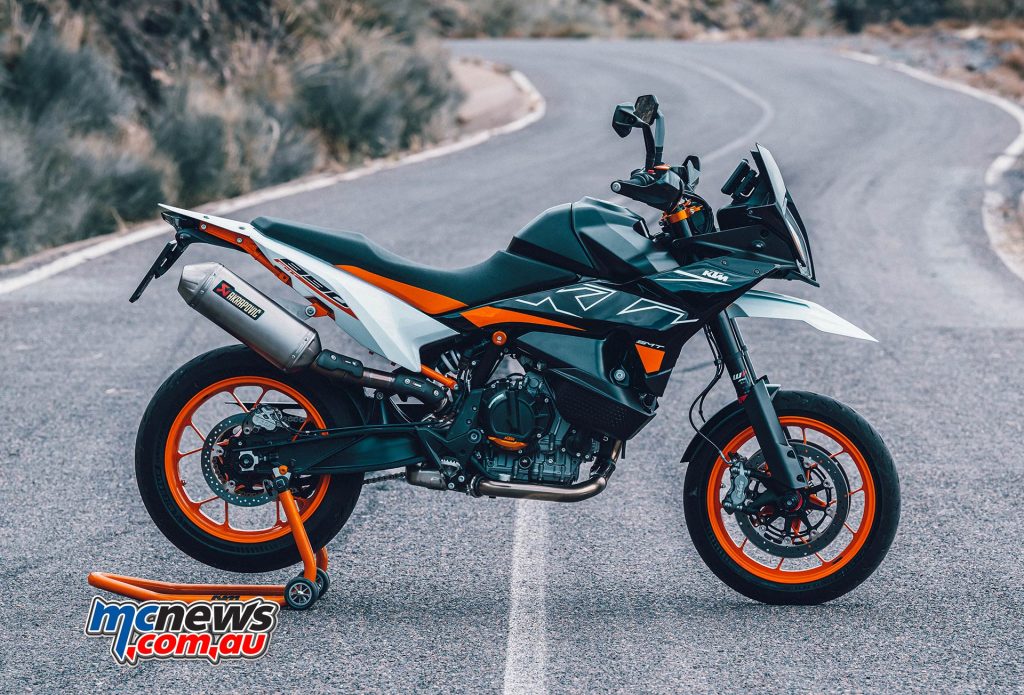
Just don’t make the mistake of underestimating how capable the SMT is. Even with the side cases on, I was easily able to use all of the tyre – while hanging off sportsbike-rider style. And it felt like the cases weren’t even there.
There’s plenty of adjustment and response from the clickers at either end too. I had a little more rear pre-load dialled on and only marginally firmer front end over standard settings and it was pretty much goldilocks.
Comfortable enough to do three-hour stints without a break while giving all the feedback and confidence to rail corners. The Michelin PowerGT tyres are a great choice. Loads and loads of grip and feel – I noticed especially on the way into corners just how deep I could trail brake and keep that front end in the mid-stroke of the fork travel for maximum grip.
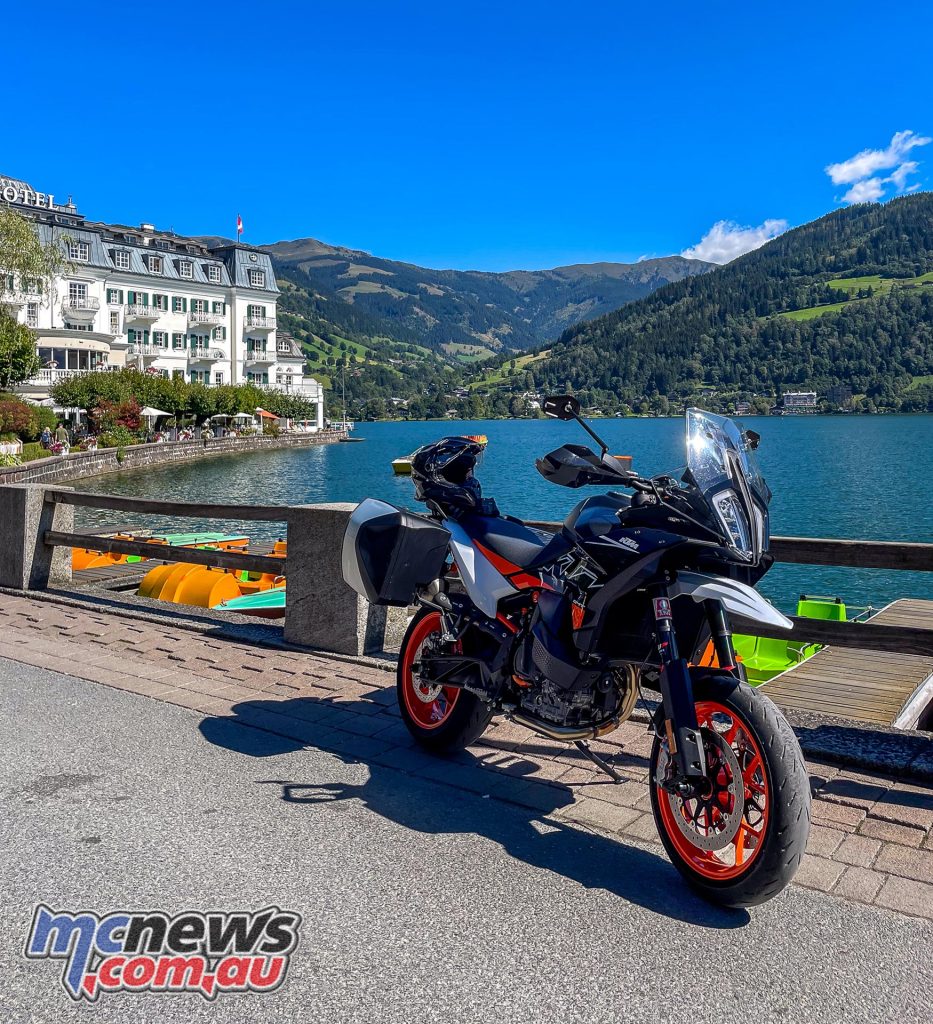
Plenty of opportunity to test that out in the Alps… they have a corner or two in those hills. And on corner exit I had more than enough feel to get the rear juuussst sliding as I fed in the gas. It’s nice and flickable without being as razor quick to steer as the Duke which for some is maybe too sharp for the road.
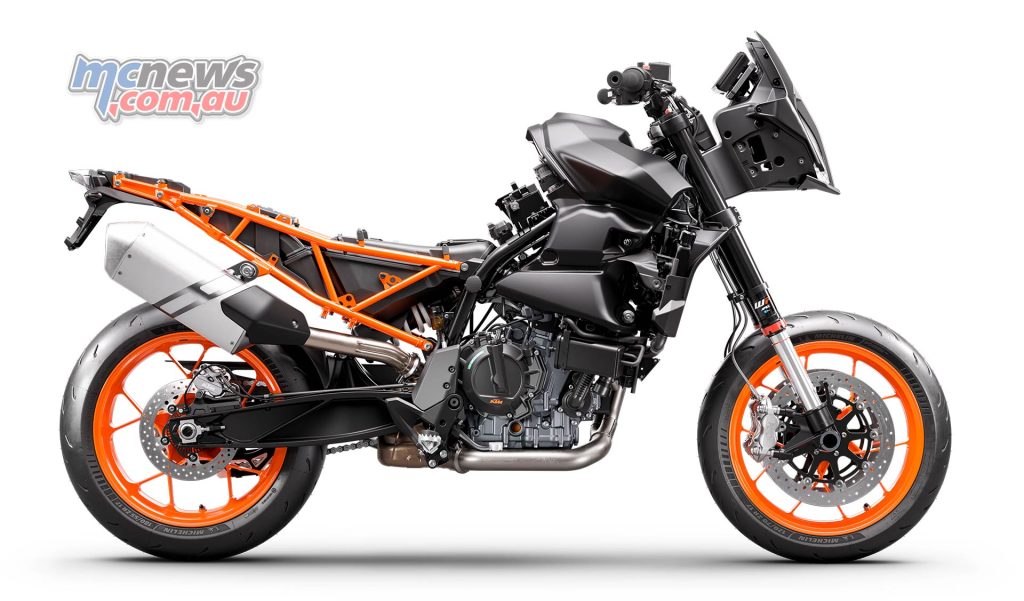
It makes sense that this sits somewhere between the Duke and the Adventure in terms of geometry and ‘sharpness’ on the road. For what it’s worth – I’d personally take the SMT over the Duke every time. No question.
I had Traction Control set to off whenever the road was dry to allow me to play around… both with wheelies and slides which brings me to one of the few gripes I had with the bike. You have to turn TC off every time you turn the bike off and back on. Which from memory was six button taps in any mode other than track mode where you can press and hold the ‘down’ button at TC level 1, to turn it off (which is why I kept it in track mode)…
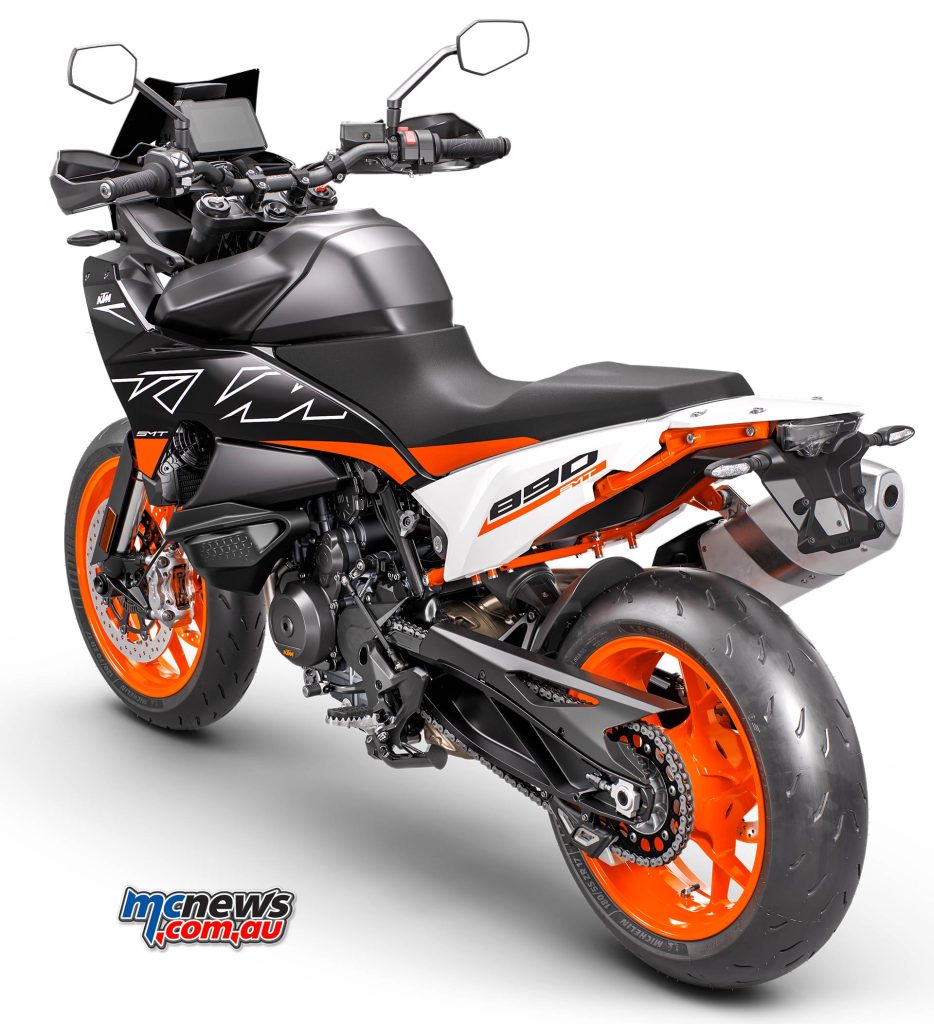
This seems more than at odds with the bike’s personality to me. It’s 2023. More than a few manufacturers are honouring the rider’s chosen TC settings these days. At the very least it should be one button press in any mode. But better still – leave it as we set it. Please.
But that’s about as far as my gripes go. You can probably tell by now that I enjoyed my lap on the SMT. A lot. At no point during the near 60 hours of saddle time on my 11-day lap was I wanting to be on anything else.
It’s a cracking bike and one that got a bunch of praise from knowing riders throughout my journey. Even in Italy, the home of Ducati and Aprilia I got plenty of ‘bella moto!’s and thumbs up.
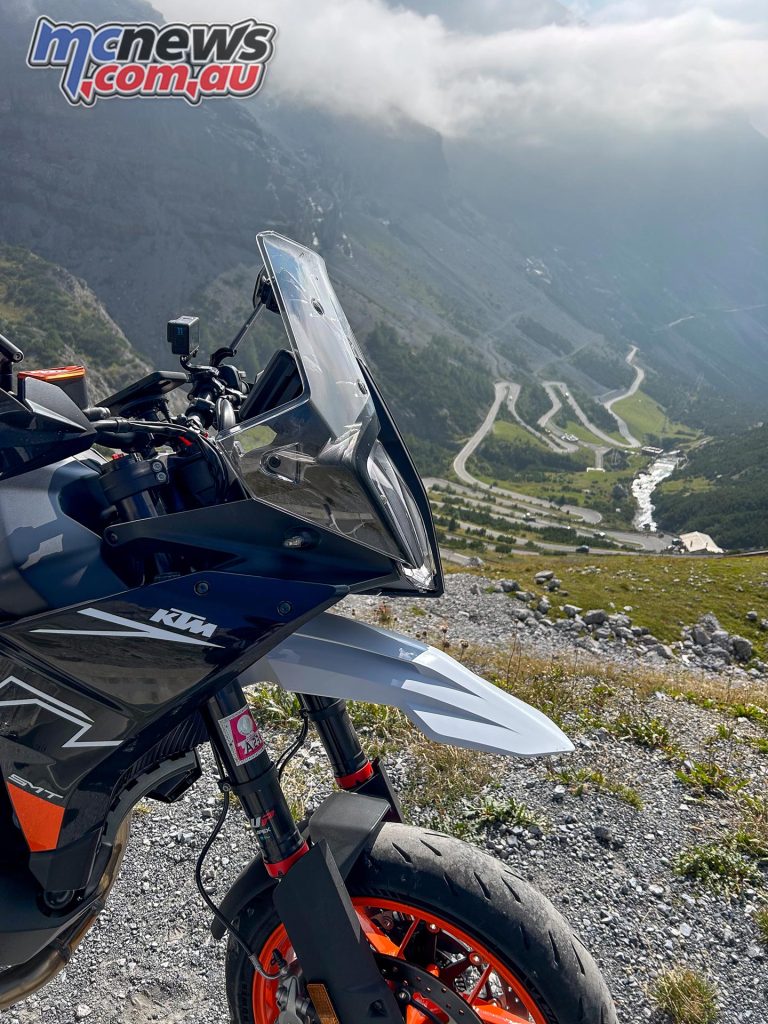
Going back to my three opening questions:
How does it compare to the old 990? There’s no getting past the fact that the old 990 V-twin engine had heaps of character. Arguably more character than the LC4 even though not all of the old engine was good… it was a pain below 4000 rpm really.
The truth is I’d choose the 890. The engine has more than enough character and is way more flexible. All while being line-ball on performance despite being far more frugal. It’ll easily get past 250 km on the smaller 16 L tank while meeting current emission requirements. And handling wise it will run rings around the old bike. I think it’s ever so slightly more ‘sportsbike’ than ‘supermotard’ compared to the 990, but again – I think it’s better for it. Much easier on the eye too…
Is the SMT as good on road as the Adventure R is off-road? I’m saying yes. If the AR is the benchmark for serious off-road riding in the middleweight sector, I can’t think of anything else with the same blend of flexibility, capability, comfort and fun on the sealed stuff. It’s a bit of a unicorn. No doubt it’ll be compared with things like the admittedly great Yamaha Tracer GT and BMW’s F 900 XR but I’m not convinced they have as broad a skillset as the SMT. You wouldn’t be able to ride either of those motard style as comfortably as the 890 surely?
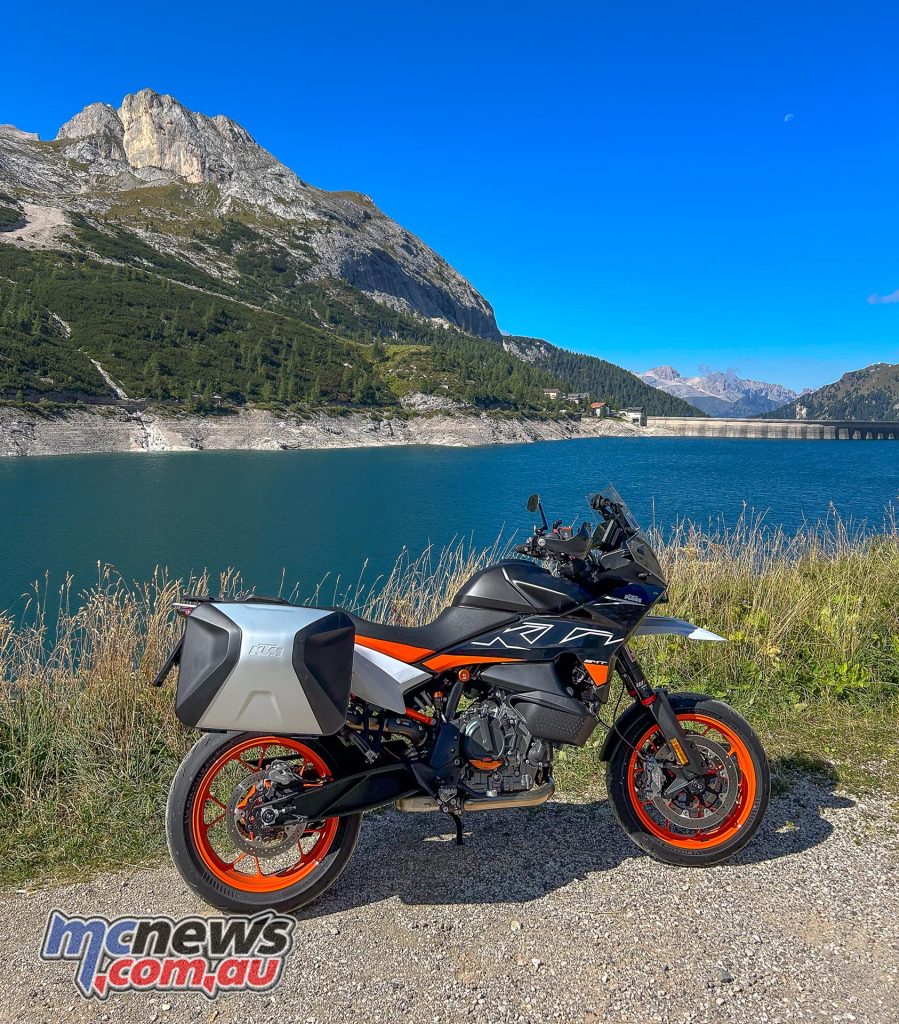
And finally – Is it really a sports-tourer? I’m going to say no to this one. It’s more than that. Much more. That’s putting in too small a pigeon hole. KTM call it a ‘Supermoto Tourer’ (der Wayne, that’s literally what the SMT moniker stands for), and I think that’s somehow more apt than sports-tourer as it suggests more flexibility, which this has in spades.
Price-wise it comes in at 24 and a half big ones. The AR is 26 and half by comparison. That means it lines up prices-wise almost exactly with the aforementioned Tracer GT while being up a little on the F 900 XR, depending on which options you tick. So it’s in the ballpark.
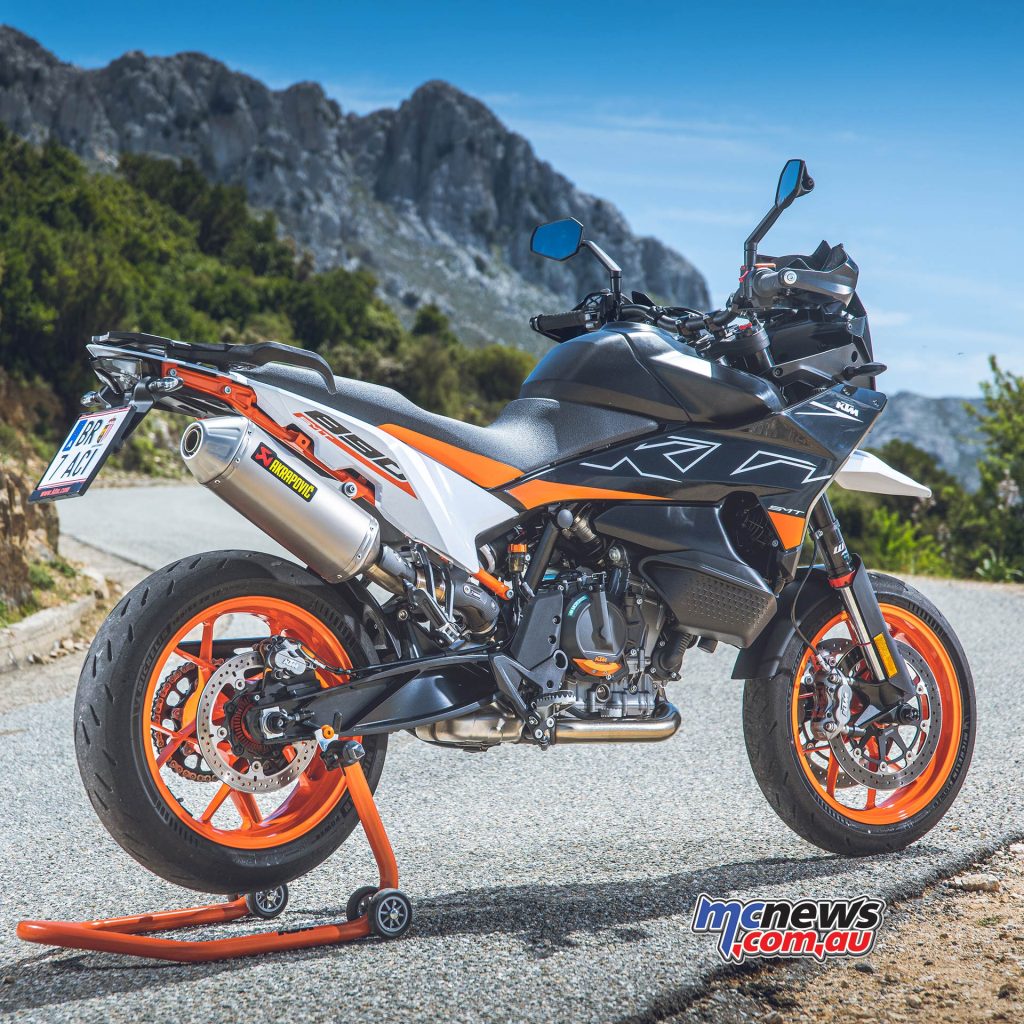
The bike I was riding came with a few options and accessories, the most important being the Tech Pack (giving you access to the electronic goodies), a slightly taller windshield with GPS cradle as well as the lovely Akro slip-on and the Touring Side Cases. I’d be ticking all of those boxes which would nudge the price up another few grand. And I’d be happy.
Welcome back SMT. We’ve missed you.
I the KTM 890 SMT because:
- Feels like the on road sweet spot between the focussed Duke and the go anyone Adventure R
- Superbly capable handling while being plenty comfortable for big stints
- Driveline is super flexible, with more than a bit of hooligan when you want it
- They’ve managed to make something you can ride supermotard OR sportsbike style just as confidently
I’d the KTM 890 SMT more if:
- Having to turn TC off every time I turn the key on gets old
- Must be nearly time KTM started fitting heated grips as standard?
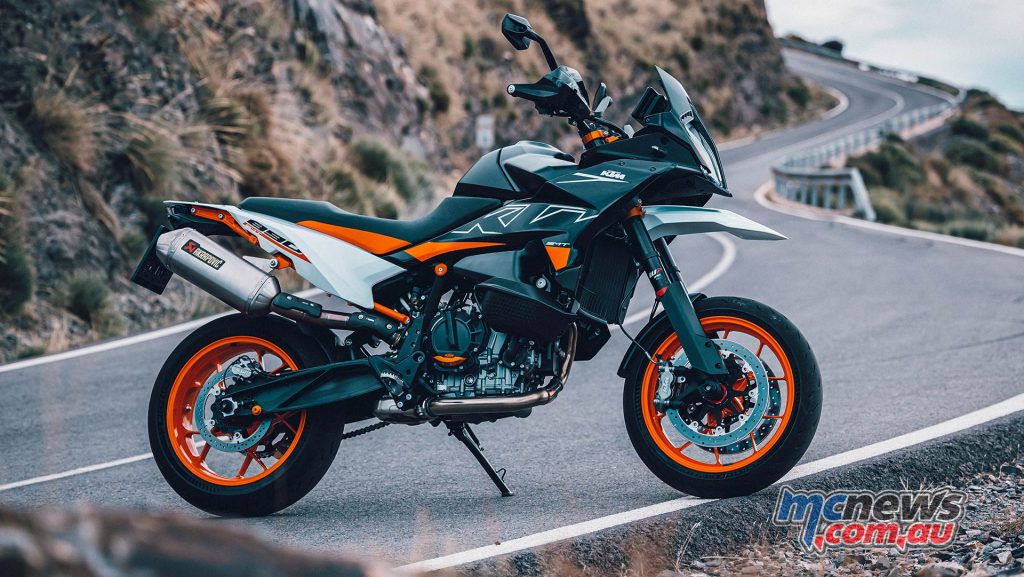
KTM 890 SMT Specifications
| 2023 KTM 890 SMT Specifications | |
| Engine | 889 cc, parallel-twin, liquid-cooled |
| Bore x Stroke | 90.7 x 68.8 mm |
| Power | 105 hp (77 kW) at 8000 rpm |
| Torque | 100 Nm at 6500 rpm |
| Compression Ratio | 13.5:1 |
| Induction | DKK Dell’Orto (Throttle body 46 mm) |
| EMS | Bosch ride by wire |
| Traction Control | Lean angle sensitive three-mode, disengageable, optional track mode |
| Transmission | Six-speed, chain drive |
| Frame | Chromium-Molybdenum-Steel frame using the engine as stressed element, powder coated |
| Subframe | Chromium-Molybdenum-Steel trellis, powder coated |
| Front Suspension | 43 mm WP APEX forks, adj. compression and rebound, 180 mm travel |
| Rear Suspension | WP APEX Monoshock, adj. pre-load and rebound, 180 mm travel |
| Front Brakes | 2 x radially mounted 4 piston caliper, brake disc Ø 320 mm |
| Rear Brake | 2 piston floating caliper, brake disc Ø 260 mm |
| ABS | Bosch 9.3 MP (incl. Cornering-ABS and Supermoto ABS) |
| Tyres | 120/70 ZR 17 (F), 180/55 ZR 17 (R) |
| Steering Head Angle | 64.21-degrees |
| Trail | 111.6 mm |
| Wheelbase | 1502 mm |
| Ground clearance | 227 mm |
| Seat Height | 860 mm |
| Fuel Capacity | 15.8 litres |
| Wet Weight | 194 kg ready to ride |







